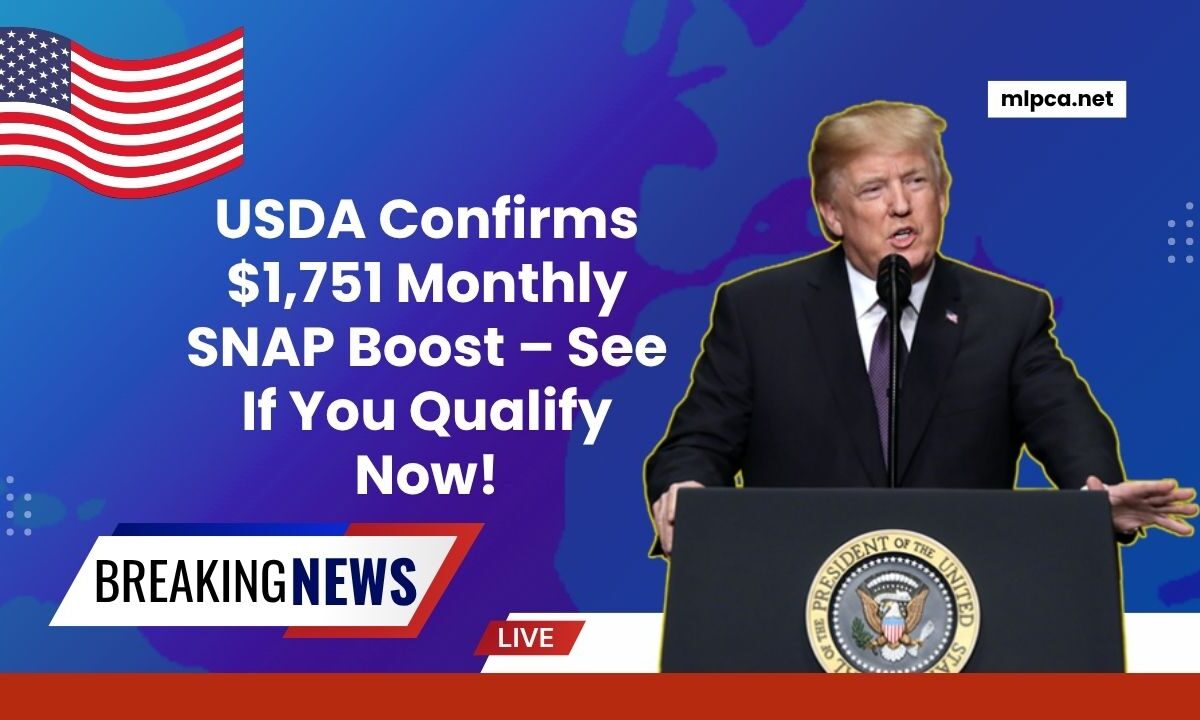The USDA has officially announced a substantial increase to the Supplemental Nutrition Assistance Program (SNAP): up to $1,751 per month for an eight-person household—marking the highest benefit ever offered.
This update aims to counter rising grocery prices and help millions of low-income families access nutritious meals in 2025.
Why SNAP Benefits Increased in 2025
- The USDA adjusts SNAP benefits annually based on the Thrifty Food Plan.
- Ongoing inflation in essential food prices—like fruits, dairy, and meat—triggered this update.
- Research showed previous SNAP levels were insufficient for families to meet basic nutritional needs.
- Bipartisan support grew amid broader economic pressures, including housing and healthcare costs.
SNAP Benefit Breakdown for July 2025
| Household Size | Max Monthly Benefit |
|---|---|
| 1 person | $291 |
| 2 people | $535 |
| 3 people | $766 |
| 4 people | $973 |
| 5 people | $1,155 |
| 6 people | $1,386 |
| 7 people | $1,532 |
| 8 people | $1,751 |
| Each additional member | +$219 |
These amounts reflect maximum eligibility; actual payouts depend on individual income, expenses, and location.
July 2025 State-by-State SNAP Schedules
- Benefits are issued via EBT cards, and each state follows its own timeline.
- Distribution may occur on the 1st of the month or use a staggered schedule based on identifiers like:
- Last digit of Social Security Number
- Case ID number
- First letter of recipient’s last name
- Check with your state’s Department of Human Services or local SNAP office to confirm your payment date.
How SNAP Helps Beyond Food
- Budget relief: Higher SNAP means families can allocate funds toward rent, healthcare, and utilities.
- Stronger nutrition: More benefit enables a diet with fresh produce, dairy, and lean meats.
- Resource strategies: Maximize benefits with:
- Grocery loyalty programs
- Double Up Food Bucks at farmers’ markets
- Pairing SNAP with WIC or local food bank support
Eligibility Requirements
To qualify for full benefits, households must meet both gross and net income limits (depending on size), and adhere to asset thresholds.
States may also require work registration for certain able-bodied adults. Regular annual reviews and cost-of-living updates ensure benefit levels stay aligned with economic conditions.
Why This Matters Now
This SNAP increase addresses several pressing challenges:
- Record-high food inflation even after pandemic-era relief.
- Data revealing that old benefit levels couldn’t sustain a nutritious diet.
- A political consensus recognizing food aid as a foundation for family and community stability.
Action Steps for SNAP Recipients
- Confirm your maximum allotment based on your household size.
- Check income eligibility to ensure you’re receiving the full amount.
- Verify your state’s EBT deposit schedule to receive benefits on time.
- Maximize your purchasing power through farmers’ markets and loyalty programs.
- Pair SNAP with other assistance such as WIC or local food pantries.
The USDA’s approval of a $1,751 monthly SNAP benefit for large households in 2025 marks a milestone in federal food assistance. These increases—from $291 for singles to $1,751 for eight-person families—aim to combat inflation and support nutritious diets.
Understanding your eligibility, payment schedule, and how to stretch benefits can significantly improve food security and family wellbeing this year.
Stay informed, apply smart strategies, and ensure you’re taking full advantage of this life-changing support.
FAQs
Will everyone receive $1,751 each month?
No—$1,751 is the max benefit for an eight-person household. Smaller households receive less based on the table above.
Do SNAP benefit schedules vary by state?
Yes—each state sets its own EBT payment timeline, which may be based on SSN, case ID, or last-name initials.
Can SNAP be combined with other support programs?
Absolutely. Programs like WIC, Double Up Food Bucks, and local food pantries can supplement SNAP benefits, stretching budgets further.

